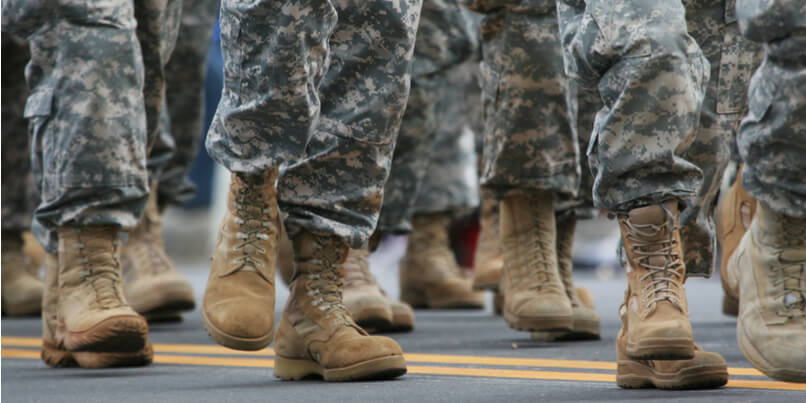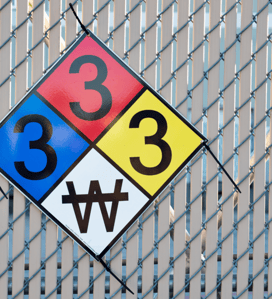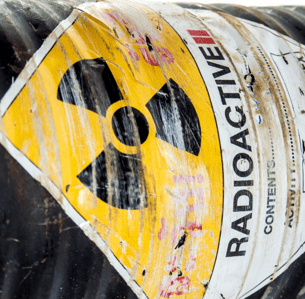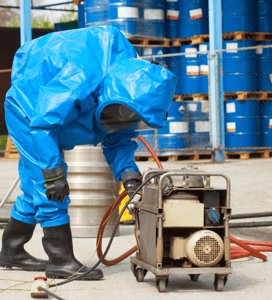
Army hazmat training plays an important role in preparing key personnel for the safe transport of hazardous materials.
As part of its national defense mission, the US military makes use of a wide range of hazardous substances. These can include petroleum products, chemicals, explosives and solvents - all of which can pose a physical risk if handled improperly.
In this blog post we explore the process by which substances are classified as hazardous and ways in which hands-on army hazmat training scenarios can enhance theoretical understanding of safe handling.
Classification of hazardous substances: the first step for effective army hazmat training
In the US, any substance that requires transportation, and that has the potential to pose a hazard (whether it be to public safety or to the environment), is required to adhere to hazmat regulations as set out by the US Department of Transportation (DOT) and the International Air Transport Association (IATA.)
A hazardous material can be defined as any item or chemical that poses either a health risk or a physical danger in the event of leaking, spillage, leaching, dumping or disposal into the environment.
Title 49, Section 172.101, of the Code of Federal Regulations (CFR) provides clear terms and definitions of materials that are denoted as posing a hazmat risk. If an item isn’t on the list, or if it is deemed to be in a sufficiently small reportable quantity, then it may not be classed as a hazard.

Chemicals that are classed as hazmat include:
- Carcinogenic, toxic, irritant or corrosive substances
- Combustible or flammable liquids
- Flammable solids, compressed gases, organic peroxides, explosives
Before any military hazardous material can be shipped or moved, it must first be certified as being “safe to transport.” This includes verifying all paperwork, packaging, labeling or marking of hazardous materials and following the appropriate procedure for the correct loading, unloading, receiving or forwarding of items.
Correct packaging and handling of identified HazMat substances
All substances that are deemed to be a hazmat risk must be correctly packaged, depending on the potential risk that they pose. Hazmat substances can typically be sorted into one of three packing groups:
1) Packing Group I - indicating that there is a high degree of risk associated with the substance
2) Packing Group II - indicating that the item presents a moderate degree of danger
3) Packing Group III - indicating that the material is deemed to be hazardous but of low danger
Once a hazmat substance has been packaged it must then be clearly labeled for  transport, depending on the hazard category into which it falls. The categories, which are clearly defined in the CFR regulations, cover everything from explosives, flammable gases and spontaneously combustible items to poisons, infectious substances, corrosives and radioactive materials.
transport, depending on the hazard category into which it falls. The categories, which are clearly defined in the CFR regulations, cover everything from explosives, flammable gases and spontaneously combustible items to poisons, infectious substances, corrosives and radioactive materials.
→ Learn more about HazMat by visiting: An Introduction to HazMat Training
An overview of army hazmat training certifications
In the US, all branches within the Department of Defense (DOD) provide hazmat training to educate and certify relevant personnel in the safe storing, transport and handling of hazardous items.
In addition to key army personnel, any military employee whose duties involve the transportation or handling of hazmat substances will be required to complete certification training specific to their duties. Hazmat safety training typically comprises a combination of classroom-based and/or web-based learning and is required to be repeated in its entirety on a regular basis. 
One example of certification provided by the US military is the Ammo-67-DL HazMat Familiarization and Safety in Transportation which provides an overview of essential hazmat safety including vehicle inspection, the Joint Hazard Classification System (JHCS), emergency response and the certifying of hazmat materials for safe transport.
In addition to army hazmat training, the US navy offers a similar variety of certifications in Hazardous Control and Management (HC&M) to all its enlisted navy personnel who are tasked with handling, storing, transporting or disposing of hazardous materials.
→ Related: How to use a HazMat leak simulator to train for spill events
Ensuring effective army HazMat training outcomes
While there is no doubt that classroom and web-based training ticks the boxes in ensuring army personnel gain a theoretical understanding of the importance of hazmat safety - it’s also important to ask the question “what happens in the event that something goes wrong?”
And what army hazmat training procedures are in place to ensure the safety of personnel, the public and the environment in the event that hazmat substances are inadvertently (or perhaps even deliberately) released?
As we outlined in a recent blog post on realistic scenarios for effective hazmat safety training, there is a strong argument for providing army personnel, and indeed anyone tasked with first response, with exposure to realistic and engaging hands-on learning experiences that prepare them for a variety of hazmat threats.
In this way, structured classroom teaching can be supported by access to live-incident training to ensure that teams are confident in the safe handling of hazardous substances and in the correct protocol to follow in the event of a release.
→ Related: HazMat training equipment: 10 effective tools to consider
To learn more about how simulated detectors can improve army HazMat training, including examples of scenarios achievable with this technology, download our free guide: Chemical Warfare Agent Training Exercises Using Simulators.






